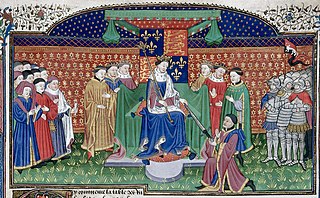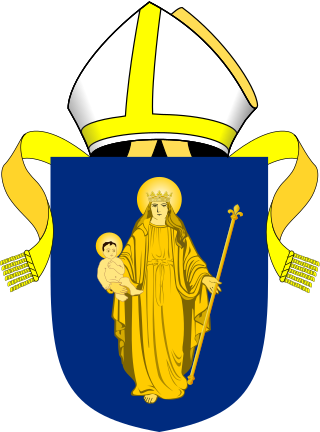William Courtenay was Archbishop of Canterbury (1381–1396), having previously been Bishop of Hereford and Bishop of London.
Thomas Langton was chaplain to King Edward IV, before becoming successively Bishop of St David's, Bishop of Salisbury, Bishop of Winchester, and Archbishop-elect of Canterbury.

Henry Chichele was Archbishop of Canterbury (1414–1443) and founded All Souls College, Oxford.

John Stafford was a medieval English prelate and statesman who served as Lord Chancellor (1432–1450) and as Archbishop of Canterbury (1443–1452).

Richard Poore or Poor was a medieval English bishop best known for his role in the establishment of Salisbury Cathedral and the City of Salisbury, moved from the nearby fortress of Old Sarum. He served as Bishop of Chichester, Bishop of Salisbury and Bishop of Durham.
Richard FitzNeal was a churchman and bureaucrat in the service of Henry II of England.

John Waltham was a priest and high-ranking government official in England in the 14th century. He held a number of ecclesiastical and civic positions during the reigns of King Edward III and Richard II, eventually rising to become Lord High Treasurer, Lord Privy Seal of England and Bishop of Salisbury. He is buried in Westminster Abbey, London.

The Bishop of Salisbury is the ordinary of the Church of England's Diocese of Salisbury in the Province of Canterbury. The diocese covers much of the counties of Wiltshire and Dorset. The see is in the City of Salisbury where the bishop's seat is in the Cathedral Church of the Blessed Virgin Mary. The current bishop is Stephen Lake.
Richard Sampson was an English clergyman and composer of sacred music, who was Anglican bishop of Chichester and subsequently of Coventry and Lichfield.

Simon Sydenham was a medieval Dean of Salisbury and Bishop of Chichester.
Richard Praty was a medieval university Chancellor and Bishop.
James Goldwell was a medieval Dean of Salisbury and Bishop of Norwich.

The Sherborne Missal is an early 15th-century English illuminated manuscript missal, one of the finest English examples of International Gothic painting. With 347 vellum leaves measuring 535 by 380 millimetres, it weighs 20 kg. It has survived in excellent condition, and is usually on display at the Ritblat Gallery in the British Library. It has been described as "beyond question the most spectacular service book of English execution to have come down to us from the later Middle Ages."
Robert de Stretton was Bishop of Coventry and Lichfield following the death of Roger Northburgh in 1358. A client of Edward, the Black Prince, he became a "notorious figure" because it was alleged that he was illiterate, although this is now largely discounted as unlikely, as he was a relatively efficient administrator.

John Buckner, LL.D. (1734–1824) was an Anglican clergyman who served in the Church of England as the Bishop of Chichester from 1797 to 1824.
Richard Kingston was a Canon of Windsor from 1400 to 1402 and the Dean of Windsor from 1402 to 1418.
John Boor was a Canon of Windsor from 1389 - 1402 and Dean of the Chapel Royal.
William de Pakyngton was a Canon of Windsor in 1381 and Dean of Lichfield.
Thomas Butiller was an English priest in the late 14th and early 15th centuries.
William Fleshmonger(? -1541/42), the son of a Winchester College tenant, was born in Hambledon, Hampshire. He was a Doctor of Canon Law and Dean of Chichester during the turmoil of the English Reformation.







